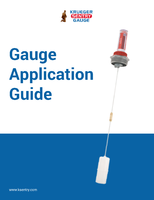NIST Lends Instrument Calibration Knowhow to DSCOVR mission.
Share:
Press Release Summary:
DSCOVR (Deep Space Climate Observer) satellite will measure Earth’s radiation budget – whether Earth's atmosphere is retaining more or less solar energy than it radiates back to space – using NISTAR (NIST Advanced Radiometer) conceived by NIST sensor researchers. In support of NASA and NOAA, NIST has been integral part of preparing missions for blast-off for decades. Instrument calibration is crucial in launch preparation, and this is where NIST excels.
Original Press Release:
A Measurement Job That's Truly Out of this World
DSCOVR
The DSCOVR Mission's NISTAR—the NIST Advanced Radiometer—will measure the Earth’s radiation budget, or whether our planet’s atmosphere is retaining more or less solar energy than it radiates back to space. Credit: NASA/DSCOVR
The scientists and engineers at NIST, the National Institute of Standards and Technology, are recognized experts at the critical task of calibrating precision instruments to ensure the data they return are trustworthy. Usually, if something goes wrong, you can just recalibrate. But if the instrument in question is tracking the Earth from space, the stakes get higher.
Scheduled to launch on Sunday, the DSCOVR (Deep Space Climate Observer) satellite carries two NIST-calibrated instruments. Including one — NISTAR — conceived by NIST sensor researchers. In support of NASA and NOAA — two agencies more readily associated with space — NIST has been an integral part of preparing missions for blast-off for decades.
Many missions over the past 24 years have involved observing phenomena on our own planet. A crucial step in launch preparation is instrument calibration, and this is where NIST, the nation’s measurement authority, comes in.




